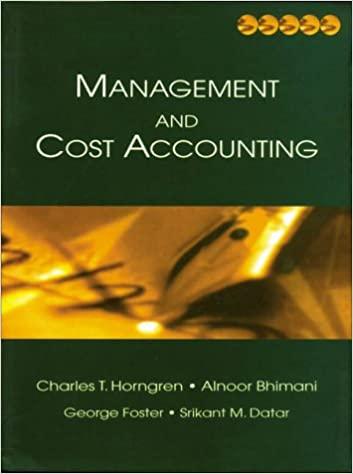Net realisable value cost-allocation method, further process decision. (W. Crum, adapted) (20-30 minutes) Langholmen-Sverige, AB, crushes and
Question:
Net realisable value cost-allocation method, further process decision. (W. Crum, adapted) (20-30 minutes) Langholmen-Sverige, AB, crushes and refines mineral ore into three products in a joint-cost operation. Costs and production for 2000 were as follows:
® Department 1, at initial joint costs of SKr 420,000, produces 20,000 kg of Vadstena, 60,000 kg of Vattervik and 100,000 kg of Birgitta.
@® Department 2 processes Vadstena further at a cost of SKr 100,000.
® Department 3 processes Vattervik further at a cost of SKr 200,000.
Results for 2000 are
® Vadstena: 20,000 kg completed; 19,000 kg sold for SKr 20 per kg;
ending stock, 1,000 kg.
® Viattervik:60,000 kg completed; 59,000 kg sold for SKr 6 per kg;
ending stock, 1,000 kg.
® Birgitta: 100,000 kg completed; 99,000 kg sold for SKr 1 per kg;
ending stock, 1,000 kg; Birgitta required no further processing.
REQUIRED 1. Use the estimated NRV method to allocate the joint costs of the three products. Calculate the total costs and unit costs of closing stock.
2. Calculate the individual gross-margin percentages of the three products.
3. Suppose Langholmen-Sverige receives an offer to sell all of its Vattervik product for a price of SKr 2 per kg at the split-off point before going through Department 3, just as it comes off the production line in Department 1. Using last year’s figures, would Langholmen-Sverige be better off by selling Vattervik that way or processing it through Department 3 and selling it? Show computations to support your answer. Disregard all other factors not mentioned in the problem. 986
Step by Step Answer:

Management And Cost Accounting
ISBN: 9780130805478
1st Edition
Authors: Charles T. Horngren, Alnoor Bhimani, Srikant M. Datar, George Foster





